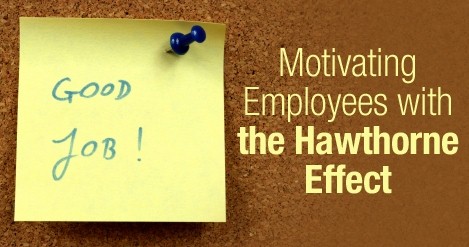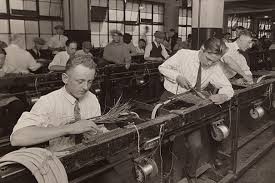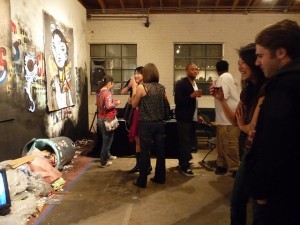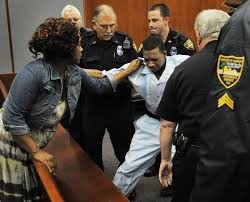The Hawthorne Effect
 The Western Electric’s Hawthorne plant was located in Chicago. It had some 29,000 employees and it manufactured telephones and telephone equipment mainly for AT & T. The company was known for its advanced personnel policies. The company kept updating its policies at regular intervals and once welcomed a research study by the National Research Council to check the relationship between friendly work-place atmosphere and individual efficiency.
The Western Electric’s Hawthorne plant was located in Chicago. It had some 29,000 employees and it manufactured telephones and telephone equipment mainly for AT & T. The company was known for its advanced personnel policies. The company kept updating its policies at regular intervals and once welcomed a research study by the National Research Council to check the relationship between friendly work-place atmosphere and individual efficiency.
The study began in 1924 by dividing two groups of workers. This was done to check the impact of various motivational factors on their productivity. One group was given Improved levels of lighting and the other below-standard lightning. The group which got better lightening produced more with increase in their productivity, but the group which had sub-standard lightening also gave a good productivity. The initial assumption therefore was that increased output stemmed from disparity alone.
To check the other motivational factors payment incentives and rest intervals were manipulated at regular intervals, and although output levels varied, the trend was inevitably upwards. Whatever experimentation was applied, output went up. Although it had been fairly conclusively determined that lighting had little or nothing to do with output levels. The Assistant Works Manager, George Pennock sensed that something peculiar was going on and that experimentation needs to be continued.
In the winter of 1927, Pennock invited Clair Turner, Professor of Biology and Public Health at MIT, for further consultancy. Turner determined that rest breaks were not the cause for increased output, although it was observed that longer rest breaks gave rise to more social interaction and gave rise to change in mental attitudes among some workers. Prof.Turner attributed the rise in output to the small group; the type of supervision; earnings; the novelty of the experiment, and the increased attention given to the chosen workers for experiment.
 Pennock had been among the first to note that supervisory style has a tremendous effect and is important. The supervisor involved in the lighting experiment had been relaxed and friendly; he got to know the operators well and was not too worried about company policies and procedures. Discipline was protected through liberal and understanding leadership and an esprit de corps (sense of unity) increased within the group. This was in drastic contrast to standard practice before the experiment.
Pennock had been among the first to note that supervisory style has a tremendous effect and is important. The supervisor involved in the lighting experiment had been relaxed and friendly; he got to know the operators well and was not too worried about company policies and procedures. Discipline was protected through liberal and understanding leadership and an esprit de corps (sense of unity) increased within the group. This was in drastic contrast to standard practice before the experiment.
Turner further invited Elton Mayo – Industrial Psychologist and Professor at Harvard University’s School of Business Studies. Mayo’s Visits in 1929 and 1930 indicated that the Test Room Workers had turned into a social unit, enjoyed all the attention they were getting, and had developed a sense of participation in the project.
In order to understand this further Mayo instituted a series of interviews. These provided the workers with an opportunity to express their views and let off steam. It emerged that when people are distressed in a given situation and are given a chance to discuss, they feel better even if the situation does not change. The experiment also found that some complaints of workers had little or no basis, and they were stressed in their personal lives which was causing distress. By focusing on more informal and open conversation with workers and by empathetically listening to them Mayo had struck a key which linked the style of supervision and the level of morale to heightened levels of productivity. Mayo was acclaimed by his followers as the Founder of the Human Relations (HR) as a branch of Management Studies, while he was criticized by sociologists for not going far enough in his analysis.
 Reading Mayo’s conclusions and interpretations cause no surprise – let alone discovery – in the 1990s; his findings are increasingly commonplace among social scientists, trade unionists and managers alike. Perhaps that is a measure of his achievement, because most critics and commentators agree that he was the first to demonstrate, infer and provide evidence from it to shift management thinking in a direction other than the widespread and deep-rooted dominance of Taylor’s scientific management.
Reading Mayo’s conclusions and interpretations cause no surprise – let alone discovery – in the 1990s; his findings are increasingly commonplace among social scientists, trade unionists and managers alike. Perhaps that is a measure of his achievement, because most critics and commentators agree that he was the first to demonstrate, infer and provide evidence from it to shift management thinking in a direction other than the widespread and deep-rooted dominance of Taylor’s scientific management.
The experiment also gave rise to the term – ‘Hawthorne effect’ – a situation which arose because people were ‘singled’ out for special treatment or a ‘special situation’ was created where workers could feel free to air their problems.
Mayo and one of his major colleagues and collaborators – F J Roethlisberger were widely reported and discussed. Roethlisberger said that without Mayo’s interpretations the results of Hawthorne case would be a big zero and would lye collecting dust in the archives.
Do you know that the Hawthorne case stimulated ‘Organizational Behavior’ as subject? And also gave birth to McGregor’s ‘Theory X and Theory Y’ with its wider implications for leadership in organizations.
The conclusions drawn by Mayo from the Hawthorne studies established the beginnings of the importance of management style as a major contributor to industrial productivity. It emphasized on the need of interpersonal skills and monetary incentives or target-setting, and a more humanistic approach as a means of satisfying the organization’s economic needs and human skills.
The Hawthorne effect is named after what was one of the most famous experiments in industrial history. It marked a sea change in thinking about work and productivity. Previous studies, in particular Frederick Taylor’s influential ideas, had focused on the individual and on ways in which an individual’s performance could be improved. Hawthorne set the individual in a social context, establishing that the performance of employees is influenced by their surroundings and by the people that they are working with as much as by their own innate abilities.
The Second World War prompted a shift the field, as it turned its attention to large-scale logistics and operation research. There was a renewed interest in rationalist approaches to the study of organizations. It enthused and inspired many management thinkers like Herbert Simon, James G. March, Chester Bernard, Henri Fayol, Fredrick Herzberg, Abraham Maslow, David McClelland, Victor Vroom, Douglas McGregor, Karl Weik and Mary Parker. Lot of research was conducted in OB. In the 1960s and 1970s, the field became more quantitative and produced such ideas as bounded rationality, the informal organization and resource dependence. It also gave rise to Contingency Theory, Institutional Theory, and Organizational Ecology. Starting in the 1980s, cultural explanations of organizations and organizational change became areas of study. They were influenced and supplemented by anthropology, psychology and sociology. OB further got strengthened as a branch of studies by qualitative research.
Chester Bernard recognized that individuals behave differently while performing their roles in their organizations and differently in their personal lives. Organizational behavior studies the behavior of individuals primarily in their organizational roles. In doing so, organizational behavior draws most heavily on industrial and organizational psychology and social psychology. One of the main goals of organizational theorists is, according to Simms (1994), “to revitalize organizational theory and develop a better conceptualization of organizational life”.
The emotion of human cannot be underrated. The more we try to rely on rational argument and extrinsic motivation to convince people to change their attitudes and actions about emotionally charged issues at workplace such as diversity, generation gap, client service and client acquisition and succession planning etc they can rebound badly. The crux of the matter is that emotions cannot be suppressed and are inherent. We might study number of good business cases; if we study them only from quantitative angel without qualitative approach we get only half the story.
 For example, it’s interesting to note that, lawyers spend a great deal of money, time and effort on jury selection for testing trial presentations, knowing that psychological factor is the key. Yet they ignore the behavioral and emotional side in governing their internal affairs and supposedly client-focused practices. We see the same dichotomy in architecture, where architects have to deal with the emotional responses of the public to their designs and structures, in financial services, where professionals know that market behavior is driven by emotions, and other fields that are selling their knowledge and analytical abilities. Isn’t this strange?
For example, it’s interesting to note that, lawyers spend a great deal of money, time and effort on jury selection for testing trial presentations, knowing that psychological factor is the key. Yet they ignore the behavioral and emotional side in governing their internal affairs and supposedly client-focused practices. We see the same dichotomy in architecture, where architects have to deal with the emotional responses of the public to their designs and structures, in financial services, where professionals know that market behavior is driven by emotions, and other fields that are selling their knowledge and analytical abilities. Isn’t this strange?














































